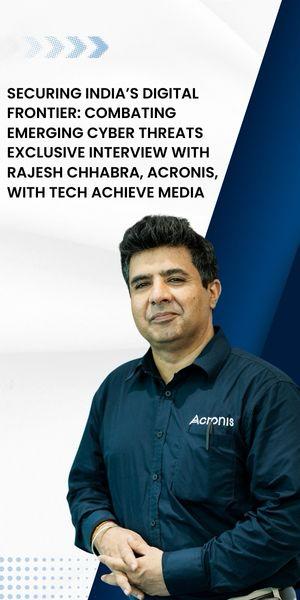You’ve been asking the wrong question. For the past three years, every boardroom conversation has circled the same anxious narrative: How do we protect ourselves when AI replaces our jobs? Executives spend millions building “AI strategies” that are really just elaborate insurance policies against obsolescence. Teams get upskilled. Consultants get hired. Frameworks get implemented.
Also read: The Silent Business Killer: AI Bias and the Leadership Blind Spot
And almost none of it matters because you’re defending the wrong territory. The future of AI isn’t about machines replacing us. That’s not even the interesting plot twist. The real story, the one that will separate winners from irrelevance, is that AI will, at scale, expose exactly which humans are amplifiable and which aren’t. Which leaders can think? Which teams can actually create? Which organizations can move with intention rather than inertia?
The machines don’t replace you. Humans who refuse to evolve do.
The Replacement Myth Is The Comfortable Lie
Let’s be direct: we’ve built a narrative around AI replacement because it’s easier to fear than to think. It’s easier to say “automation will take jobs” than to say “most people aren’t building skills that matter anymore, and AI is just making that visible.”
Excel didn’t replace accountants; it eliminated the ones who thought their value was arithmetic. The spreadsheet destroyed an entire category of human calculator and revealed that finance professionals who couldn’t believe strategically were just expensive overhead. GitHub Copilot didn’t reduce developer demand; it made it visceral, showing which developers were actually architects versus which were syntax-aware copy-paste machines. When Canva launched, design agencies didn’t disappear; the mediocre ones became unemployment statistics.
AI is doing what technology always does: it’s compressing time and exposing truth. And it’s doing both at a velocity that won’t give you time to hide. AI takes the work that required 60% thinking and 40% execution, and it does the 60% faster than you can blink. That doesn’t eliminate your job. It eliminates the jobs of people who thought the 60% was the valuable part.
The Real Competition Is Human Limitation
This is where it gets uncomfortable, and where most organizations completely miss the opportunity.
The constraint isn’t the technology. It’s human judgment, intuition, taste, and the ability to know what questions to ask before you know the answers. It’s the capacity to see what’s missing, to smell when something’s off, to make bets on possibilities that don’t yet exist. It’s knowing when a number is lying to you. It’s caring enough to push back.
These aren’t skills that automate. These are muscles that atrophy if you don’t use them.
And right now? Most organizations are doing the opposite. They’re pushing decision-making down into dashboards. They’re replacing judgment with process. They’re hiring people to manage systems instead of people to think. For decades, this worked fine. It was efficient. It scaled. It was also training your entire workforce to become redundant.
Then AI showed up and made that efficiency strategy look like a recruitment error.
Think about what happens next. You have a team that’s spent five years learning how to execute processes flawlessly. Now you hand them an AI that executes processes infinitely faster. What exactly are they there for? But you have another team; the ones who asked why you built those processes in the first place, who challenged the assumptions, who understood the customer’s actual problem beneath the stated one, and suddenly they have a superpower. They can focus entirely on what matters.
AI doesn’t replace those people. It frees them.
The Competitive Advantage Is Taste + Conviction
Here’s what separates the organizations that will win from the ones that will be acquisition targets or historical footnotes:
It’s the ability to say no.
It’s knowing what your customer doesn’t know they need. It’s the conviction to build something nobody asked for because you understand something fundamental about how humans actually work. It’s the capacity to look at an AI’s output and know immediately whether it’s brilliant or dangerous. It’s having taste.
Taste is a human thing. It comes from having actually lived, having made bets, having failed, having read widely, having thought about things that don’t directly make you money. It comes from having opinions. And this is where most organizations have already lost.
If your competitive advantage is that your team is better at using AI tools than the other team, you’ve already lost. That commoditizes in months; by Q2 next year, everyone will be equally skilled at prompt engineering.
But if your competitive advantage is that you understand a customer problem so profoundly that you can use AI to solve it in ways your competitors haven’t even conceived of yet, that’s different. That’s a moat. Look at how companies like Perplexity are rebuilding search, or how teams are using agentic AI to automate workflows nobody else has even mapped yet. They’re not winning because they have better access to models. They’re winning because they have better taste in what problems matter.
The Uncomfortable Truth: You’re Already Competing
This isn’t coming. It’s not a future scenario. It’s now.
Right now, somewhere, a CTO is using Claude or ChatGPT to architect a system faster than your team is even framing the problem. A product leader at a Series B startup is synthesizing customer feedback through AI faster than your quarterly review cycle. Anthropic released Claude with agentic reasoning, and teams already using it are thinking three layers deeper than teams still figuring out how to prompt-engineer.
And if your response is defensive, waiting for the perfect moment to “upskill,” bringing in a Chief AI Officer, building guardrails instead of capabilities, then you’re moving backward in real time while everyone else is compressing their decision cycles.
The organizations that win will be those that realize this: AI is a forcing function for taste, judgment, and human excellence. Use it to amplify those things, and you become exponentially more powerful. Try to protect yourself from it, and you’re just delaying the moment when you actually have to think.
The question isn’t how you compete with AI.
The question is whether you have the kind of people, the kind of mind, that makes competing alongside AI even possible?

The article has been written by Anees Merchant, Executive Vice President and Global Head of Innovation, IP, and Analytics Consulting, C5i









